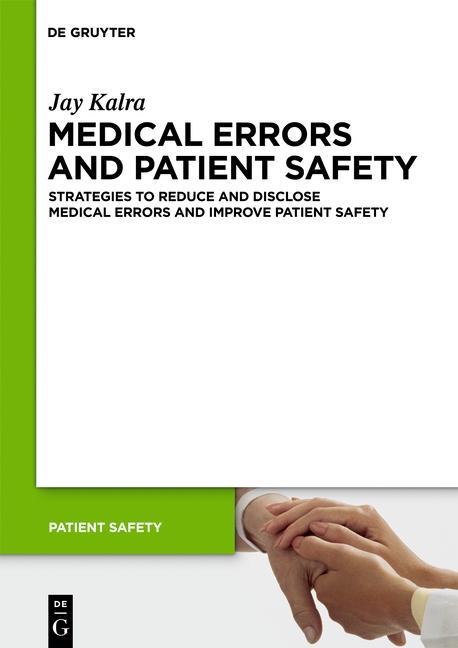
Sofort lieferbar (Download)
Is the reporting of medical errors changing? This book shows with real cases from health care and beyond that most errors come from flaws in the system. It also shows why they don't get reported and how medical error disclosure around the world is shifting away from blaming people, to a "no-fault" model that seeks to improve the whole system of care.
The book intends to provide an introduction to medical errors that result in preventable adverse events. It will examine issues that stymie efforts made to reduce preventable adverse events and medical errors, and will moreover highlight their impact on clinical laboratories and other areas, including educational, bioethical, and regulatory issues. Varying error rates of 0. 1-9. 3% in clinical diagnostic laboratories have been reported in the literature. While it is suggested that fewer errors occur in the laboratory than in other hospital settings, the quantum of laboratory tests used in healthcare entails that even a small error rate may reflect a large number of errors. The interdependence of surgical specialties, emergency rooms, and intensive care units - all of which are prone to higher rates of medical errors - with clinical diagnostic laboratories entails that reducing error rates in laboratories is essential to ensuring patient safety in other critical areas of healthcare.
The author maintains that many such errors are preventable provided that appropriate attention is paid to systemic factors involved in laboratory errors. This book identifies possible intelligent system approaches that can be adopted to help control and eliminate these errors. It is a valuable tool for physicians, clinical biochemists, research scientists, laboratory technologists and anyone interested in reducing adverse events at all levels of healthcare processes.
Inhaltsverzeichnis
1;Contents;8 2;Acknowledgments;10 3;About the author;12 4;Abbreviations;14 5;1 An overview and introduction to concepts;16 5.1;1.1 Introduction;16 5.2;1.2 Medical error;17 5.3;1.3 Magnitude and epidemiology of health care errors;19 5.4;1.4 Conclusion;23 6;2 Perceptions of medical error and adverse events;26 6.1;2.1 Introduction;26 6.2;2.2 Perceptions by physicians;27 6.3;2.3 Perceptions by the public;28 6.4;2.4 Perceptions by health care staff;30 6.5;2.5 Perceptions by medical students;32 6.6;2.6 A sociological perception of medical error;34 6.7;2.7 Conclusion;35 7;3 Causes of medical error and adverse events;38 7.1;3.1 Introduction;38 7.2;3.2 The cognitive influence on error-generating behavior;42 7.3;3.3 Conclusion;43 8;4 Medical error and strategies for working solutions in clinical diagnostic laboratories and other health care areas;46 8.1;4.1 Introduction;46 8.2;4.2 Clinical diagnostic laboratories;47 8.3;4.3 Errors in different stages of analysis;49 8.4;4.4 Strategies for identification and prevention of errors;51 8.5;4.5 Errors in emergency medicine;53 8.6;4.6 Errors in intensive care medicine;56 8.7;4.7 Conclusion;60 9;5 Creating a culture for medical error reduction;66 9.1;5.1 Introduction;66 9.2;5.2 Education and professional development;67 9.3;5.3 Error reporting systems;72 9.4;5.4 Leadership and regulatory issues;74 9.5;5.5 Establishing a quality care council;75 9.6;5.6 Emotional impact of errors on health care professionals;76 9.7;5.7 Conclusion;76 10;6 Improving quality in clinical diagnostic laboratories;80 10.1;6.1 Introduction;80 10.2;6.2 Efforts and programs to ensure quality in clinical diagnostic laboratories;81 10.3;6.3 Proficiency testing in clinical laboratories;84 10.4;6.4 External quality assessment and proficiency testing programs;85 10.5;6.5 "No-fault" model;87 10.6;6.6 Conclusion;88 11;7 Barriers to open disclosure;92 11.1;7.1 Introduction;92 11.2;7.2 How to disclose;92 11.3;7.3 Disclosing errors to multiple patients;93 11.4;7.4 Bioethica
l viewpoints;94 11.5;7.5 Patient-physician relations;95 11.6;7.6 The dilemma of an apology;96 11.7;7.7 Barriers to full disclosure;98 11.8;7.8 Conclusion;99 12;8 International laws and guidelines addressing error and disclosure;102 12.1;8.1 Introduction;102 12.2;8.2 Disclosing preventable adverse events;102 12.3;8.3 International progress and initiatives;103 12.4;8.4 Conclusion;107 13;9 The value of autopsy in detecting medical error and improving quality;110 13.1;9.1 Introduction;110 13.2;9.2 Error in diagnostic medicine;110 13.3;9.3 Missed diagnosis and discordance;111 13.4;9.4 The value of autopsies;112 13.5;9.5 Autopsy decline and strategies to encourage autopsy;113 13.6;9.6 Conclusion;114 14;10 Total quality management, six-sigma, and health care;118 14.1;10.1 Introduction;118 14.2;10.2 New issues, newer solutions;119 14.3;10.3 The six-sigma structure;121 14.4;10.4 Six-sigma in clinical diagnostic laboratories;123 14.5;10.5 Conclusion;124 15;Index;126
l viewpoints;94 11.5;7.5 Patient-physician relations;95 11.6;7.6 The dilemma of an apology;96 11.7;7.7 Barriers to full disclosure;98 11.8;7.8 Conclusion;99 12;8 International laws and guidelines addressing error and disclosure;102 12.1;8.1 Introduction;102 12.2;8.2 Disclosing preventable adverse events;102 12.3;8.3 International progress and initiatives;103 12.4;8.4 Conclusion;107 13;9 The value of autopsy in detecting medical error and improving quality;110 13.1;9.1 Introduction;110 13.2;9.2 Error in diagnostic medicine;110 13.3;9.3 Missed diagnosis and discordance;111 13.4;9.4 The value of autopsies;112 13.5;9.5 Autopsy decline and strategies to encourage autopsy;113 13.6;9.6 Conclusion;114 14;10 Total quality management, six-sigma, and health care;118 14.1;10.1 Introduction;118 14.2;10.2 New issues, newer solutions;119 14.3;10.3 The six-sigma structure;121 14.4;10.4 Six-sigma in clinical diagnostic laboratories;123 14.5;10.5 Conclusion;124 15;Index;126
Produktdetails
Erscheinungsdatum
26. Mai 2011
Sprache
englisch
Untertitel
Strategies to reduce and disclose medical errors and improve patient safety.
Sprache: Englisch.
Seitenanzahl
121
Reihe
Patient Safety
Autor/Autorin
Jay Kalra
Verlag/Hersteller
Kopierschutz
mit Wasserzeichen versehen
Produktart
EBOOK
Dateiformat
PDF
ISBN
9783110249507
Entdecken Sie mehr
Bewertungen
0 Bewertungen
Es wurden noch keine Bewertungen abgegeben. Schreiben Sie die erste Bewertung zu "Medical Errors and Patient Safety" und helfen Sie damit anderen bei der Kaufentscheidung.








